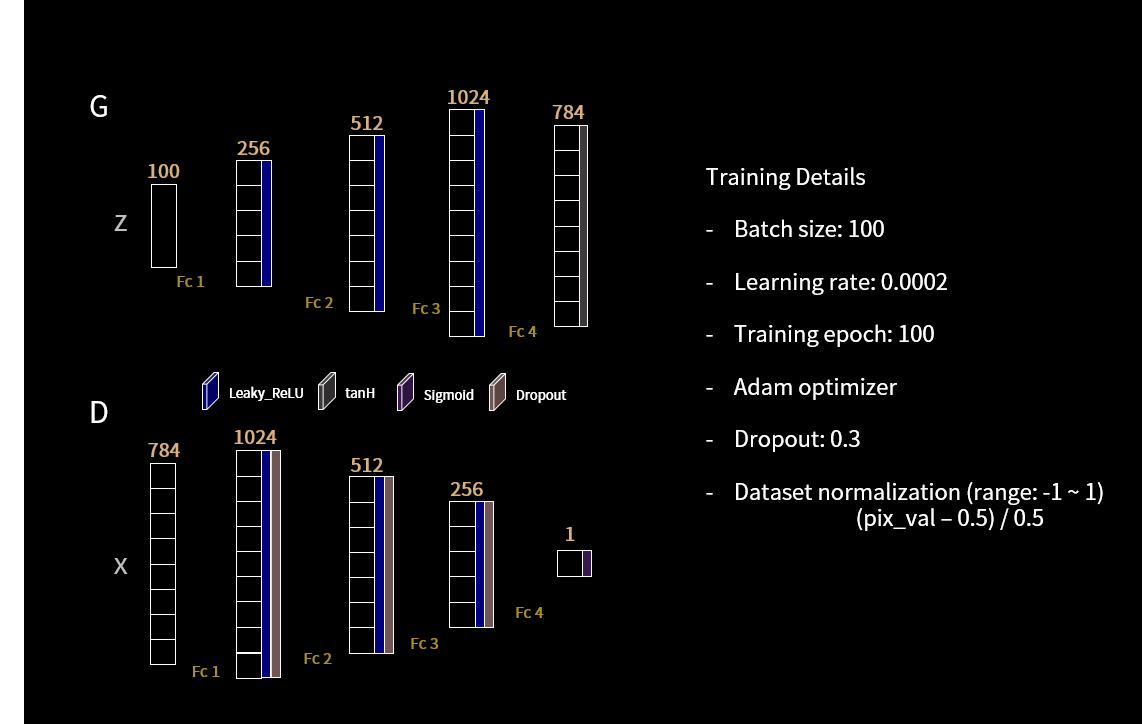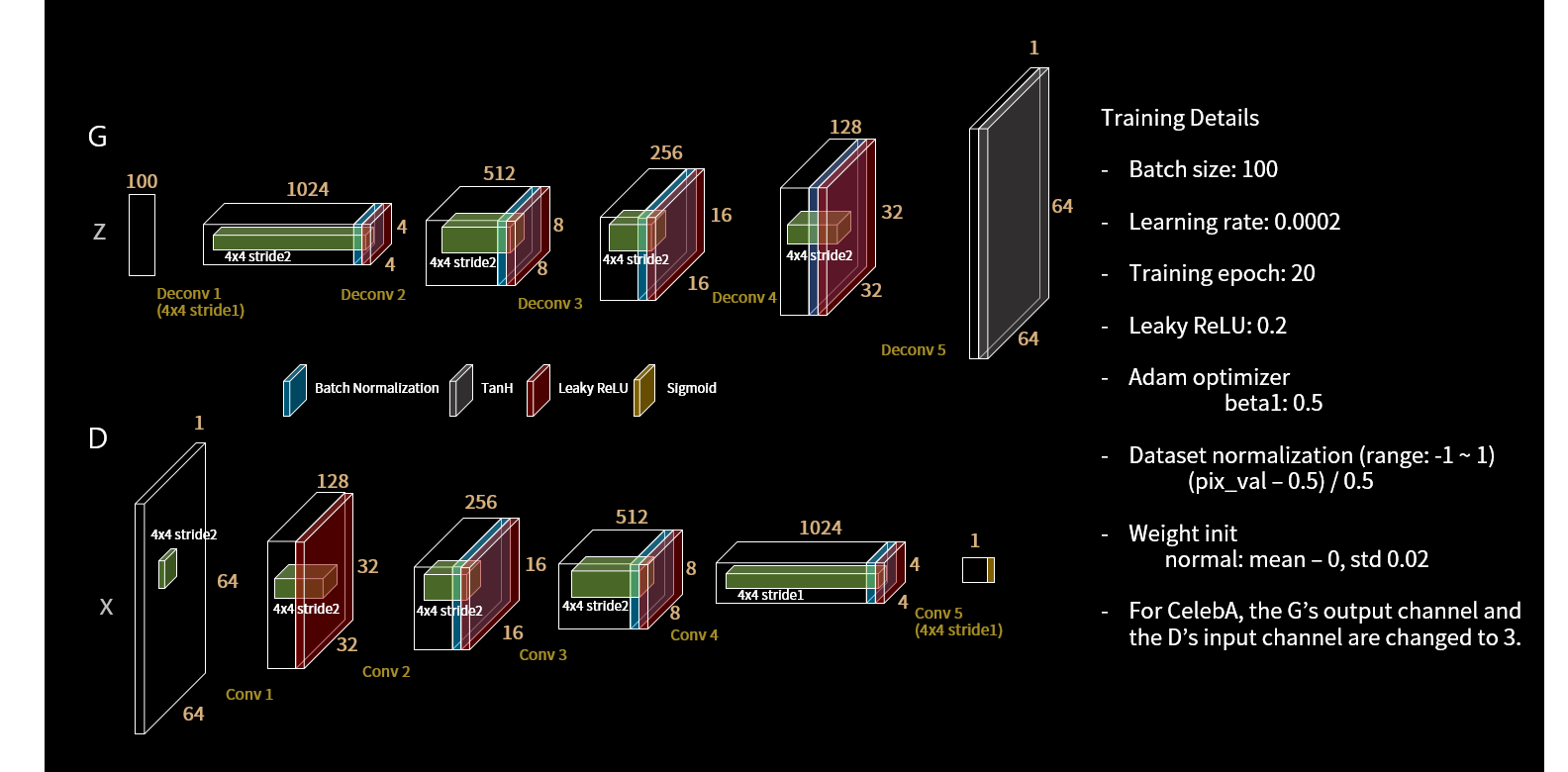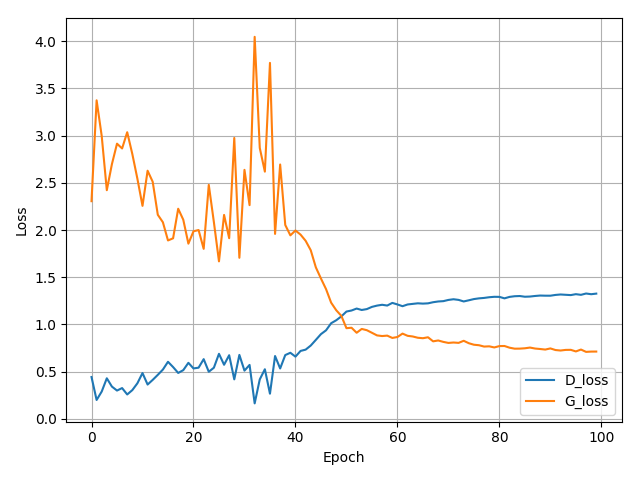tensorflow-MNIST-GAN-DCGAN
Tensorflow implementation of Generative Adversarial Networks (GAN) [1] and Deep Convolutional Generative Adversarial Networks (DCGAN) [2] for MNIST [3] dataset.
- you can download
- MNIST dataset: http://yann.lecun.com/exdb/mnist/
Implementation details
- GAN
- DCGAN
Resutls
- Generate using fixed noise (fixed_z_)
| GAN | DCGAN |
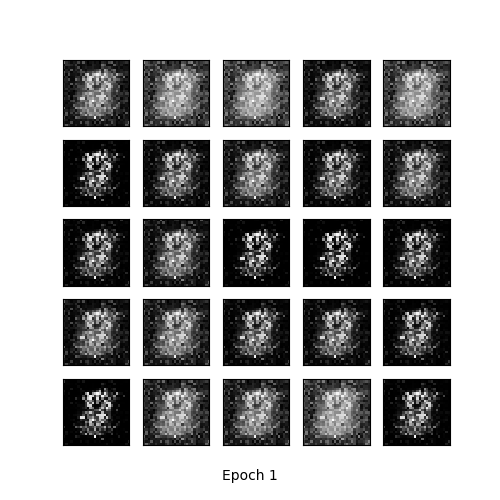
| 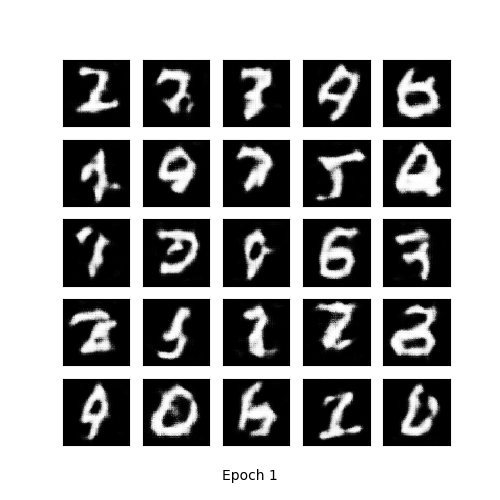
|
- MNIST vs Generated images
| MNIST | GAN after 100 epochs | DCGAN agter 20 epochs |
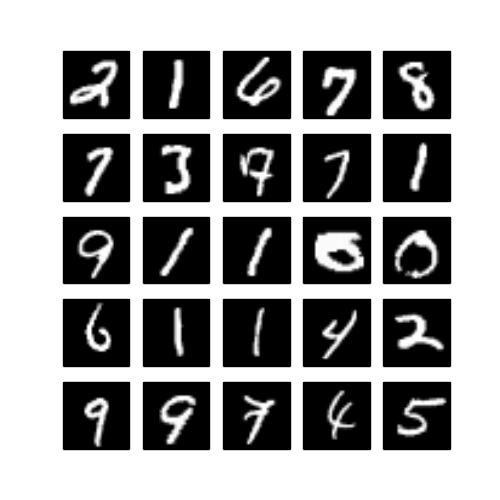
| 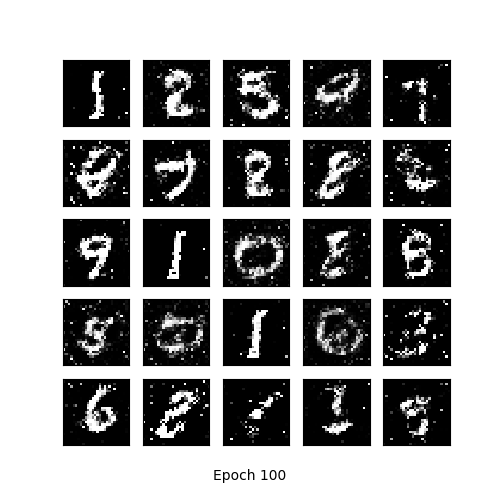
| 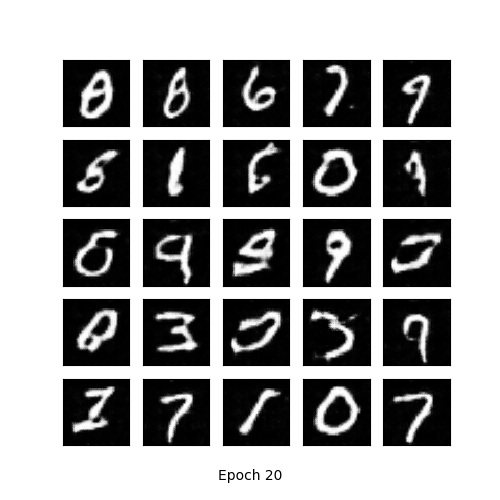
|
- Training loss
- GAN
- Learning time
- MNIST GAN - Avg. per epoch: 4.97 sec; Total 100 epochs: 1255.92 sec
- MNIST DCGAN - Avg. per epoch: 175.84 sec; Total 20 epochs: 3619.97 sec
Development Environment
- Windows 7
- GTX1080 ti
- cuda 8.0
- Python 3.5.3
- tensorflow-gpu 1.2.1
- numpy 1.13.1
- matplotlib 2.0.2
- imageio 2.2.0
Reference
[1] Goodfellow, Ian, et al. "Generative adversarial nets." Advances in neural information processing systems. 2014.
(Full paper: http://papers.nips.cc/paper/5423-generative-adversarial-nets.pdf)
[2] Radford, Alec, Luke Metz, and Soumith Chintala. "Unsupervised representation learning with deep convolutional generative adversarial networks." arXiv preprint arXiv:1511.06434 (2015).
(Full paper: https://arxiv.org/pdf/1511.06434.pdf)
[3] Y. LeCun, L. Bottou, Y. Bengio, and P. Haffner. "Gradient-based learning applied to document recognition." Proceedings of the IEEE, 86(11):2278-2324, November 1998.
